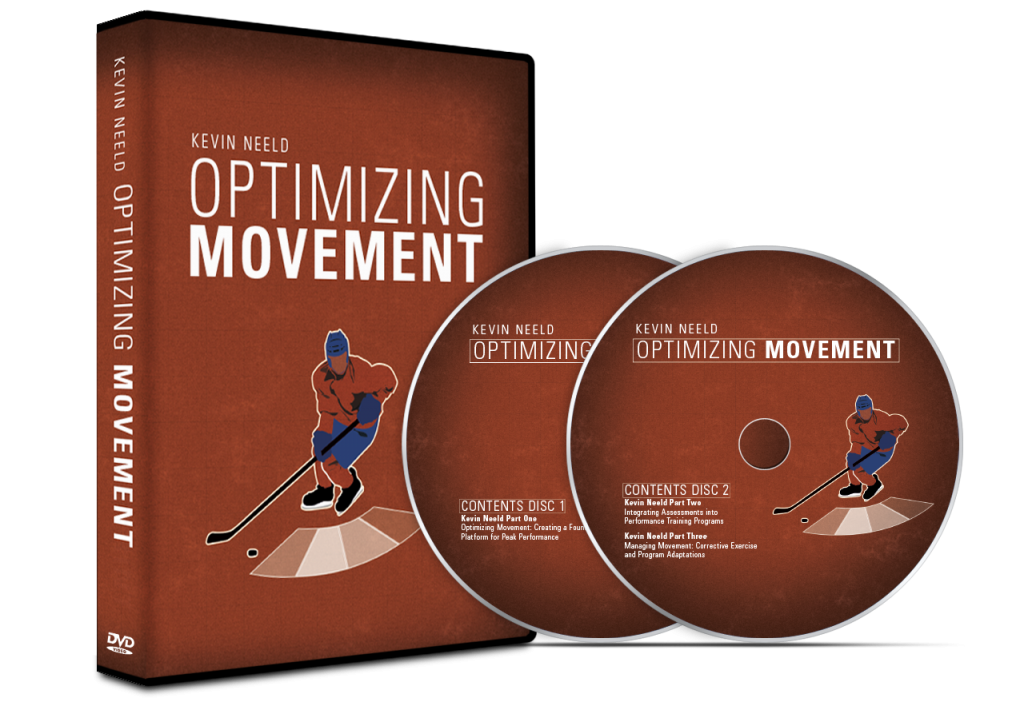Today’s post features a special guest interview with Matt Sees.
For those of you that haven’t had the pleasure, Matt has been a coach at Endeavor with me for the last couple of years. He’s been a valued member of our staff, and having played football and competed in Olympic lifting, also brings a different perspective to the training process.
I was excited to hear Matt was open to doing this interview not only because he’s a bright guy, but because I’ve watched him transition from a college football player following self-written strength programs to following those more consistent with our training philosophy and his transformation has been remarkable.
KN: Matt, thanks again for making yourself available for this. Can you give everyone a quick glimpse of your background, as an athlete and a coach?
Kevin, it’s a pleasure to do this interview. I competed in football, wrestling, and track in high school, but football was my main focus. After having success as a freshman, I earned a starting spot on the varsity team as an offensive guard and defensive tackle.
My mentor/coach at the time, Michael Belh, used to open up the weight room in-season for us twice a week calling it “The Breakfast Club.” Even though it was only my close friend Josh Weiss and I at the time, I can firmly say that those mornings molded me into who I am today. We went in, played loud music, and threw around weights. This paid off a lot for my junior and senior year, as my development in the gym helped me earn several awards for the success I had on the field.
Despite having a successful high school career, I was a defensive tackle at 5’11” and 225 lb, which isn’t very attractive to big time college programs. After a one year hiatus, I went on and played Division III football at Rowan University. I had a successful career there starting 3 years and playing with some very good players on a talented defense. While I was there, I continued to train consistently, and my weight progressed to 260lbs during my Freshman year, then 275, 280, and 290 for my Sophomore, Junior, and Senior years, respectively.
I got my first taste of coaching during high school. I volunteered to coach the “unlimited” weight class football team during my senior year. The next year I was a coach for Glassboro High School and helped with the Offense and Defensive Lines. I continued to stay involved with coaching throughout college, helping with numerous football camps during the off-season. Finally, my last coaching position before joining the Endeavor team was as an assistant wrestling coach at Lindenwold High School.
In terms of strength and conditioning, I had an interesting path to get to Endeavor. Like many former athletes, I just finished college and I was unhappy with my current training situation. Doing the Olympic lifts in a commercial gym with iron weights is slightly frowned upon.
Karl Kurtz, a former Endeavor employee, happened to overhear me talking about this and told me a little about Endeavor, notably that they play loud music and won’t throw me out for slamming weights on the ground, which was nice.
As I spent time with you and the rest of the staff, I noticed that your training philosophy was far more intelligent than what I was exposed to in the past. After constantly picking your brains with questions, I decided that it would be a great idea to submit an application to intern there. After a summer of being an intern, I was hired that fall and the rest is history!
KN: I think all of your time coaching football and wrestling made it an easy transition to get into coaching in our setting. At your “prime” in college, you were built much differently than you are now. What changes did you make in your diet to cut so much weight?
My peak weight in college was 290 lbs. Honestly, all I had to get down to a reasonable weight (e.g. 240 2 months after my last season ended ) was start eating like a normal person. After high school I met a guy name Wally who was an old school trainer who wanted to help me out. He pretty much taught me how much I needed to eat to gain the weight I wanted and it was A LOT! We are talking between 8,000-10,000 calories a day.
As an example, a typical meal that I’d eat ~5 times/day was 6 whole eggs, two giant bowls of oatmeal, 3 bagels with peanut butter, and 32oz of whole milk. I pretty much followed this strategy anytime I needed to put weight on throughout college, and ultimately it helped me transition from a 155 lb high school Freshman to a 290 lb college Senior. This is why I laugh when I hear high school kids now tell me they eat a lot and still can’t put on weight. You eat a lot? REALLY?!
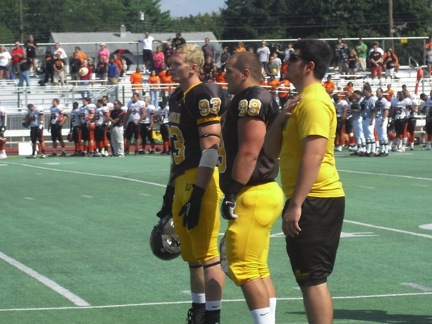
Matt, in the middle, before a college football game. Also pictured, Matt’s belly.
I dropped from 290 to 240 just by NOT doing all of the above and still lifting regularly. During my internship, one of our clients at the time introduced me to Intermittent Fasting, which, without going into too much detail, is basically fasting for ~12-20 hours every day. By following this strategy, I dropped another 20lbs pretty quickly. Finally, last spring I decided I wanted to compete in Olympic Weightlifting in the 94kg (206.8 lbs), so I did the V-Diet. The V-Diet consists of just drinking protein shakes with some supporting supplements and intermittent cheat meals for 30 days. In that time span, I dropped from 222 to 201.5.
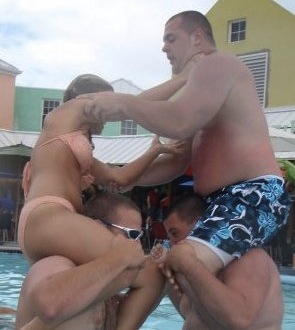
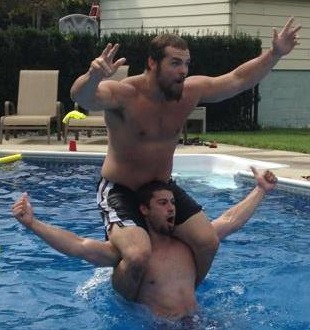
Incredibly, I was able to track down two chicken fight pictures also illustrating progress in Matt’s transformation
Several months later, I am currently floating around 210 so the cut to 94 kg will not be too difficult for my next competition. Aggressive diets work for me. I think most people struggle because as soon as they finish the diet they overcompensate by binging on all the foods they craved during the diet. I’ve been able to keep the ~80lbs I dropped off because I eat pretty clean regularly and continue to train regularly.
Right now, a typical day of eating looks like:
Morning: A homemade raw milk keifer smoothie consisting of kale, spinach, blueberries, strawberries, and flax seed.
Post workout/Snacks: Usually a banana with a protein shake mixed with raw milk. I usually have another protein shake mixed with raw milk at some point throughout the day and some almond butter for a snack.
Lunch: I will either make myself between 8-10 eggs (local farm) mixed with spinach and cheese or go get a Chipotle burrito.
Dinner: I’ll have a significant portion of beef, chicken, or pork with some type of vegetables.
Right Before Bed: A homemade raw milk keifer smoothie consisting of kale, spinach, blueberries, strawberries, and flax seed.
KN: So the key to dropping 50 lbs is to stop eating what amounts to a normal “American” breakfast for a Family of 6, at each meal. Noted.
One of the things that is most impressive about your transformation is your ability to continue setting PRs in the gym, despite being so much lighter. Tell us what a typical training session looked like for you in college and then what it looks like for you now?
In college, I was always a fan of the O-lifts, squats, overhead presses, deadlifts, and RFE split squats. My training wasn’t very structured during my early years especially compared to now. I can attribute a lot of my gains back then to increase in overall body size. Now competing in a sport where my weight stays relatively constant is completely different. Most of my training now is focused on training the neurological system to get strong rather than to gain size. My programs will usually run between 8-10 weeks then I will retest and evaluate my weaknesses to be addressed in my next program.
My college personal records (PRs) are 585 back squat, 455 bench press, 315 push press, 625 deadlift, 325 clean, 425 front squat.
Recently, at my lighter body weight, my PRs so far are 495 back squat, 425 bench press, 285 push press, 535 deadlift, 425×3 Reverse Lunge, 325 clean and jerk, 275 snatch, and a 405 front squat. I am planning on crushing most of them very soon so I will keep you posted!
As I continue to push my own education, I am guilty of trying a lot of new things but, my normal training schedule is between 5-6 days a week consisting of the O-lifts, squats, pulling, and overhead pressing. I vary the intensities to help with recovery and add variation to stimulate adaptation. Right now I’m merging Olympic lifting with ideas taken from Cal Dietz’s “Triphasic Training” into my program and am pretty excited about the results I’ve been seeing.
I know I’m not the only one who came up with this “bright” idea, but I think a lot of people are headed in the wrong direction on how to use these methods, as it seems like most people completely overlook recovery. I’m working on a 5-day schedule where there’s a moderate intensity, high intensity, and volume-driven day, with2 recovery days in between. My goal is to compete at the USA Weightlifting National Championships next year, and I am well on the way!
KN: The progress you’ve made integrating Triphasic concepts into an O-lift dominant program has been fun to watch, and I couldn’t agree more with the necessity to focus on recovery as you push the intensity of your program. Are you doing anything specific to ensure that you stay healthy throughout this process?
The major differences in what I did in the past and what I do now is my pre/post-lift and accessory work. These are determined through the assessment process we use at Endeavor to help with any structural asymmetries or issues that show up in the screening process. These continue to be absolutely CRUCIAL for keeping me healthy and training at high intensities on a consistent basis.
Despite being strong, I always had nagging injuries from training in my earlier years. Since implementing a lot of the corrective strategies, I’ve basically been pain free, as I’m able to quickly address issues as they come up. Specifically, I normally start my training with some soft tissue work, a few PRI-based breathing exercises, mobility exercises, and finally very light bar work. This usually ends up taking between 10-15 minutes. Following my lift, I’ll spend about 5 minutes doing some stretches to keep my hips loose and finish with a PRI exercise focusing on diaphragmatic breathing in certain positions to achieve a parasympathetic state of the ANS and bring my body back to a more neutral position.
All of these things are extremely helpful, but I also think my diet and sleep habits help keep me healthy. I already dove into my diet, but from a sleep perspective, I try to get between 9-10 hours of sleep a night. This drives my girlfriend crazy because I am very adamant about my bedtime which is usually between 9pm and 10pm, and as soon as she can lift more than me, I’ll start taking her suggestions into consideration. I try to keep my room as dark and cool as possible, and have recently starting sleeping on an “Earthing” sheet, which has really helped with my sleep quality and overall recovery.
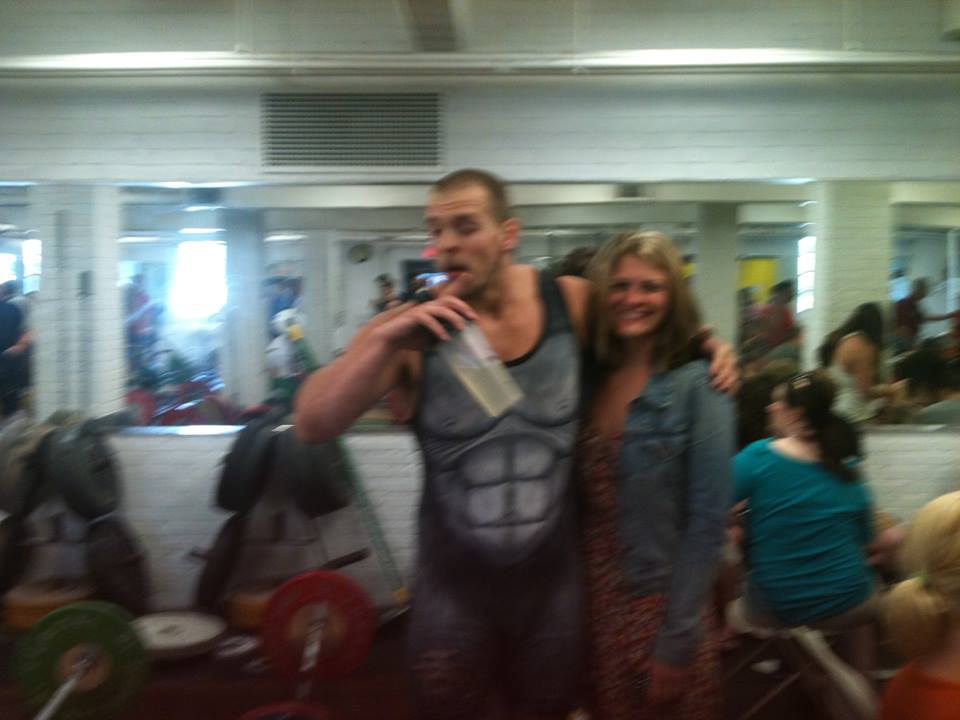
She may question his sleep habits, but NO ONE can question his style.
Overall, I think the transition from an athlete to a coach has given me more information to help improve not only my training, but also my quality of life in general. I have the great fortune of being the dumbest person in the room everyday coming to work with you and Jorts (Matt Siniscalchi). I am constantly in a quality learning environment and couldn’t thank you two enough. This has made my growth as a coach a lot easier than it probably should be!
KN: Thanks Matt! There’s a lot of good stuff in here that I think a lot of lifters can benefit from. We look forward to having you back on sometime soon!
To your success,
Kevin Neeld
OptimizingMovement.com
UltimateHockeyTraining.com
Please enter your first name and email below to sign up for my FREE Performance Training Newsletter!
“…one of the best DVDs I’ve ever watched”
“A must for anyone interested in coaching and performance!”
